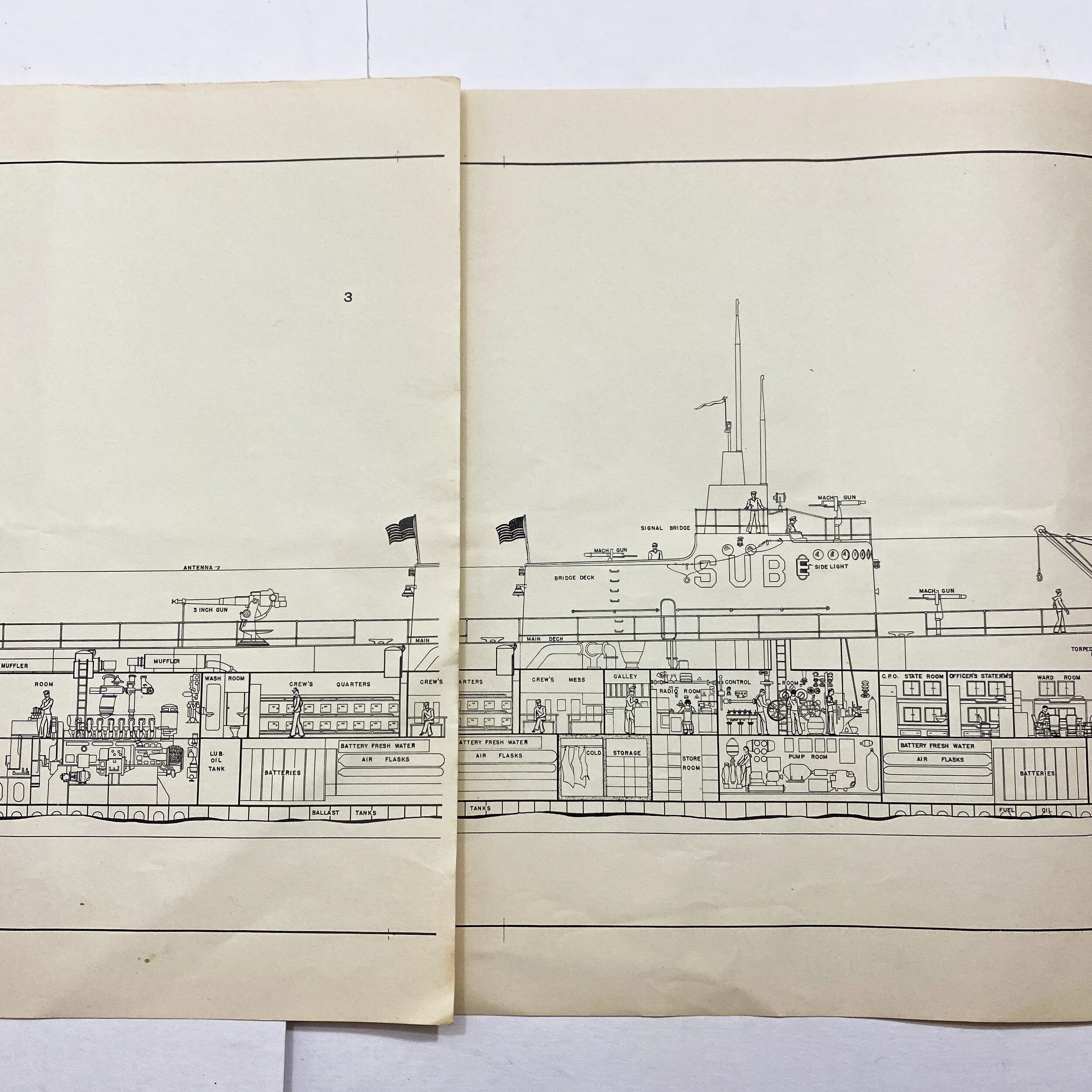'RESTRICTED' 1942 Dated - U.S. Navy Typical Submarine Blueprint Cross Section





















'RESTRICTED' 1942 Dated - U.S. Navy Typical Submarine Blueprint Cross Section
Size: 36 x 12 inches
This ‘RESTRICTED’ blueprint type diagram poster shows the cross-section of a “Typical Submarine”, one of the U.S. Navy's most infamous ships used during World War II. During World War II, 314 submarines served in the US Navy, of which nearly 260 were deployed to the Pacific. When the Japanese attacked Hawaii in November 1941, 111 boats were in commission; 203 submarines from the Gato, Balao, and Tench classes were commissioned during the war. During the war, 52 US submarines were lost to all causes, with 48 directly due to hostilities. U.S. submarines sank 1,560 enemy vessels, a total tonnage of 5.3 million tons (55% of the total sunk). The submarine force was the most effective anti-ship weapon in the American arsenal. Submarines, though only about 2 percent of the U.S. Navy, destroyed over 30 percent of the Japanese Navy, including 8 aircraft carriers, 1 battleship, and 11 cruisers. US submarines also destroyed over 60 percent of the Japanese merchant fleet, crippling Japan's ability to supply its military forces and industrial war effort. Allied submarines in the Pacific War destroyed more Japanese shipping than all other weapons combined. This feat was considerably aided by the Imperial Japanese Navy's failure to provide adequate escort forces for the nation's merchant fleet.
This diagram (two separate posters combined to make one) of a Navy Submarine ship was printed on December 7th of 1942 by the Navy Department Bureau of Ships. Not only does the diagram show each important room within the ship, but it also details other important locations such as each gun emplacement, and searchlights. This poster was prepared by Newton L. Nichols, Captain of the U.S. Navy and Director of Training, and was an instrumental tool as it was used as a training tool for WWII United States Naval officers. It was of the utmost importance that an officer knew every room of a ship, thus studying this diagram was extremely crucial.